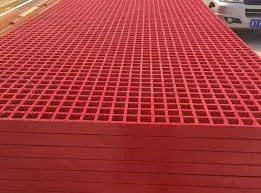
-
 Afrikaans
Afrikaans -
 Albanian
Albanian -
 Amharic
Amharic -
 Arabic
Arabic -
 Armenian
Armenian -
 Azerbaijani
Azerbaijani -
 Basque
Basque -
 Belarusian
Belarusian -
 Bengali
Bengali -
 Bosnian
Bosnian -
 Bulgarian
Bulgarian -
 Catalan
Catalan -
 Cebuano
Cebuano -
 China
China -
 China (Taiwan)
China (Taiwan) -
 Corsican
Corsican -
 Croatian
Croatian -
 Czech
Czech -
 Danish
Danish -
 Dutch
Dutch -
 English
English -
 Esperanto
Esperanto -
 Estonian
Estonian -
 Finnish
Finnish -
 French
French -
 Frisian
Frisian -
 Galician
Galician -
 Georgian
Georgian -
 German
German -
 Greek
Greek -
 Gujarati
Gujarati -
 Haitian Creole
Haitian Creole -
 hausa
hausa -
 hawaiian
hawaiian -
 Hebrew
Hebrew -
 Hindi
Hindi -
 Miao
Miao -
 Hungarian
Hungarian -
 Icelandic
Icelandic -
 igbo
igbo -
 Indonesian
Indonesian -
 irish
irish -
 Italian
Italian -
 Japanese
Japanese -
 Javanese
Javanese -
 Kannada
Kannada -
 kazakh
kazakh -
 Khmer
Khmer -
 Rwandese
Rwandese -
 Korean
Korean -
 Kurdish
Kurdish -
 Kyrgyz
Kyrgyz -
 Lao
Lao -
 Latin
Latin -
 Latvian
Latvian -
 Lithuanian
Lithuanian -
 Luxembourgish
Luxembourgish -
 Macedonian
Macedonian -
 Malgashi
Malgashi -
 Malay
Malay -
 Malayalam
Malayalam -
 Maltese
Maltese -
 Maori
Maori -
 Marathi
Marathi -
 Mongolian
Mongolian -
 Myanmar
Myanmar -
 Nepali
Nepali -
 Norwegian
Norwegian -
 Norwegian
Norwegian -
 Occitan
Occitan -
 Pashto
Pashto -
 Persian
Persian -
 Polish
Polish -
 Portuguese
Portuguese -
 Punjabi
Punjabi -
 Romanian
Romanian -
 Russian
Russian -
 Samoan
Samoan -
 Scottish Gaelic
Scottish Gaelic -
 Serbian
Serbian -
 Sesotho
Sesotho -
 Shona
Shona -
 Sindhi
Sindhi -
 Sinhala
Sinhala -
 Slovak
Slovak -
 Slovenian
Slovenian -
 Somali
Somali -
 Spanish
Spanish -
 Sundanese
Sundanese -
 Swahili
Swahili -
 Swedish
Swedish -
 Tagalog
Tagalog -
 Tajik
Tajik -
 Tamil
Tamil -
 Tatar
Tatar -
 Telugu
Telugu -
 Thai
Thai -
 Turkish
Turkish -
 Turkmen
Turkmen -
 Ukrainian
Ukrainian -
 Urdu
Urdu -
 Uighur
Uighur -
 Uzbek
Uzbek -
 Vietnamese
Vietnamese -
 Welsh
Welsh -
 Bantu
Bantu -
 Yiddish
Yiddish -
 Yoruba
Yoruba -
 Zulu
Zulu
frp tee
Understanding FRP Tee A Modern Solution in Construction
Fiber Reinforced Polymer (FRP) is increasingly becoming a vital material in various construction applications due to its unique properties. Among the many forms in which FRP can be utilized, the FRP tee stands out as a highly functional component. This article explores the significance of FRP tee in modern construction, its benefits, and various applications.
What is an FRP Tee?
An FRP tee is a structural piece made from fiber reinforced polymers, molded into a shape resembling the letter T. This design is typically employed to connect two members at right angles, making it an essential element in structural engineering. The versatility and strength of FRP tees make them invaluable in a range of applications, from building frameworks to industrial setups.
Advantages of FRP Tee
1. Strength-to-Weight Ratio One of the most significant advantages of FRP materials is their remarkable strength-to-weight ratio. FRP tees are lightweight, making them easier to handle and install compared to traditional steel or concrete components. This characteristic not only reduces transportation costs but also simplifies construction processes.
2. Corrosion Resistance FRP is inherently resistant to corrosion and chemical damage. This feature makes FRP tees particularly suitable for environments where exposure to harsh chemicals and moisture is common, such as in marine and industrial applications. Unlike metal components that may deteriorate over time, FRP tees maintain their structural integrity and appearance.
frp tee

3. Durability FRP materials exhibit high durability and have a long service life. They can withstand extreme weather conditions, UV radiation, and various environmental stresses without significant degradation. This durability translates into lower maintenance costs and extended lifespans for structural projects.
4. Design Flexibility FRP tees can be manufactured in various shapes, sizes, and colors, allowing architects and engineers to incorporate them into innovative designs. The versatility of FRP also facilitates the construction of complex structures that require customized components.
Applications of FRP Tee
FRP tees are utilized in numerous industries due to their advantageous properties. In civil engineering, they are used in the construction of bridges, walkways, and platforms where lightweight materials are essential. In the chemical and wastewater treatment industries, FRP tees are employed in piping systems, where resistance to corrosion is critical.
Furthermore, the aerospace and automotive sectors utilize FRP tees for various structural components, taking advantage of their high strength and low weight. As the demand for sustainable materials grows, the role of FRP tees in composite construction continues to expand.
Conclusion
The FRP tee represents a significant advancement in construction materials, offering a combination of strength, durability, and versatility that traditional materials cannot match. As industries seek to improve efficiency, reduce costs, and enhance sustainability, the adoption of FRP components, including tees, will likely continue to rise. Understanding the benefits and applications of FRP tee is crucial for professionals in the construction and engineering fields as they strive to innovate and improve structural designs for the future.
Latest news
-
Exploring the Benefits of Top Hammer Drifter Rods for Enhanced Drilling PerformanceNewsJun.10,2025
-
High-Precision Fiberglass Winding Machine for GRP/FRP Pipe Production – Reliable & Efficient SolutionsNewsJun.10,2025
-
FRP Pipes & Fittings for Shipbuilding - Corrosion-Resistant & LightweightNewsJun.09,2025
-
Premium FRP Flooring Solutions Durable & Slip-ResistantNewsJun.09,2025
-
Premium Fiberglass Rectangular Tanks Durable & Lightweight SolutionNewsJun.09,2025
-
Tapered Drill String Design Guide Durable Performance & UsesNewsJun.09,2025









